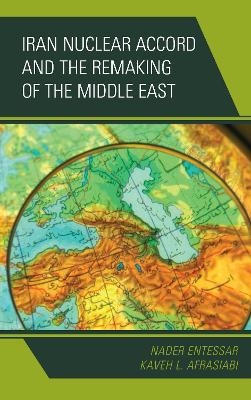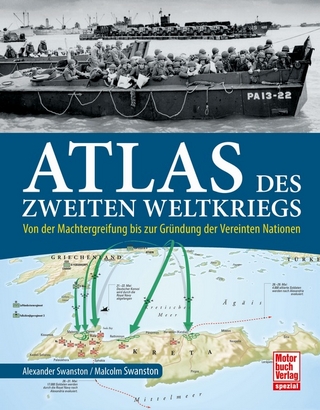
Iran Nuclear Accord and the Remaking of the Middle East
Rowman & Littlefield (Verlag)
978-1-4422-7127-2 (ISBN)
Entessar & Afrasiabi's Iran Nuclear Negotiations (Rowman & Littlefied, October 2015) offered a thorough analysis of the negotiation process between Iran and the 5+1 great powers about its nuclear program. This book essentially builds upon it, focusing this time on the final nuclear agreement, the ensuing debates around it, and its global and regional ramifications especially in the Middle East.
The first section analyzes the agreement through the prism of international relations theories, using a constructivist-critical theory approach. This is followed by an overview of the intense debates in Iran, the West, and other parts of the world, on the nuclear agreement and its various pros and cons, not to mention the connected, yet separate Iran-IAEA agreement.
The second section covers Iran's foreign policy and its various priorities, looking in particular at the impact of the nuclear deal on the country's external relations and orientations, contextualized in terms of pre-existing issues and concerns and the profound influence of the nuclear agreement on the perceptions of Iranian power in the region and beyond. Iran's relations with its Arab, Turkish, Russian, and other neighbors are discussed, focusing on both the direct and indirect impact of the nuclear agreement on these relations, especially the paradoxical implications of the nuclear deal with respect to the non-nuclear crises in the Middle East, such as the Syria-Iraq crisis, and the re-alignments that have put Iran at the crossroads of East and West. Other issues covered include energy security, regional economic cooperation, the endemic sectarianism highlighted by Iran-Saudi competition, and the deadlock on the Middle East peace process. The third section then examines the issue of a Middle East nuclear weapons-free zone and the likely consequences of the Iran nuclear deal on this prospect, which, in turn, raises the issue of regional proliferation and counterproliferation. The last section explores some possible various scenarios and the challenges of implementation as a relatively long-term agreement, providing specific policy recommendations for the regional actors and the external powers that are stakeholders in the volatile Middle East.
Nader Entessar is Professor Emeritus and former Chair of the Department of Political Science and Criminal Justice at the University of South Alabama where he specializes in the politics of the developing areas (especially the Middle East) as well as foreign policy decision-making, defense and security, and North-South issues. Kaveh Lotfollah Afrasiabi is an Iranian-American political scientist and author. He has taught Political Science at the University of Tehran, Boston University, and Bentley University and was a visiting scholar at Harvard University, University of California, Berkeley, Binghamton University and the Center for Strategic Research, Tehran. During 2004-2005, he was involved as an advisor to Iran's nuclear negotiation team.
Introduction
Part One: The Nuclear Agreement: Dimensions and Analysis
Chapter One: The Landmark Agreement and its Content
Chapter Two: The Other Agreement: Iran and IAEA
Chapter Three: Debating the Agreement: Role of IR Theories
Part Two: Nuclear Agreement and the Re-Making of Iran's Foreign Policy
Chapter Four: Iran's Foreign Policy Priorities and New Opportunities
Chapter Five: Impact on Iran's Relations with the Arab World
Chapter Six: Impact on Iran-Turkey Relations
Chapter Seven: Nuclear Agreement and Regional Arms Race
Chapter Eight: Iran, Between Russia and US
Part Three: Nuclear Agreement and Regional Non-Proliferation
Chapter Nine: Origins and Evolution of the Idea of a WMD-Free Region
Chapter Ten: The Question of Israel's Nuclear Arsenal
Chapter Eleven: The Road Ahead For Regional Non-Proliferation
Part IV: Future Prospects in the Middle East
Chapter Twelve: Building Scenarios
Chapter Thirteen: Toward A Peaceful Middle East
Conclusion
Chapter abstracts (Detailed description of the contents, outlining each chapter's main arguments, themes, and scope.)
Part I: The Nuclear Agreement: Dimensions and Analysis
Chapter One: The Landmark Agreement and its Content
This chapter presents an in-depth examination of the final nuclear agreement, the nature of compromises made by both sides, the bilateral and multilateral rounds that led to it, and the various aspects of the agreement's legal and political dimensions.
Chapter Two: The Other Agreement: Iran and IAEA
The separate agreement between Iran and the International Atomic Energy Agency (IAEA) is the focus of this chapter, conceived as parallel to and complementing the final accord. Sub-sections include discussion of the "possible military dimension" and the IAEA reports, etc.
Chapter Three: Debating the Agreement: Role of IR Theories
In this chapter, the authors apply different IR theories to the Iran nuclear issue, evaluating each approach's insights and shortcomings, opting for a self-constructed critical-constructivist approach that, when applied to the nuclear accord, leads to a revision of the dominant interpretations of the nuclear agreement.
Part II: Nuclear Agreement and the Re-Making of Iran's Foreign Policy
Chapter Four: Iran's Foreign Policy Priorities and New Opportunities
This chapter looks at Iran's foreign priorities and the new opportunities for advancing Iran's external interests as a result of the nuclear agreement.
Chapter Five: Impact on Iran's Relations with the Arab World
The final agreement's impact on Iran's relations with the Arab world forms this chapter's priority, focusing in particular on the Saudi-led Gulf Cooperation Council and the divisions among the GCC states on Iran, accentuated by the nuclear deal. The thesis of this chapter is that the impact on these relations is highly uncertain and paradoxical, depending on several regional and internal factors.
Chapter Six: Impact on Iran-Turkey Relations
The question of how the nuclear deal has affected Iran-Turkey relations is the focus of this chapter, looking at the trade, energy, and regional security dimensions, including the conflict in Syria. An evolution of these relations due to the lifting of sanctions is predicted, hinging on several political factors.
Chapter Seven: Nuclear Agreement and Regional Arms Race
This chapter examines the issue of arms race in Iran's region, looking in particular at Iran-GCC military (im)balance and the role of Iran's 'asymmetrical' missiles, etc.
Chapter Eight: Iran, Between Russia and US
This chapter compares and contrasts Iran-Russia and Iran-US relations and argues that the nuclear agreement has created an entirely new dynamic that has put Iran at the crossroad of Russia and US.
Part III: Nuclear Agreement and Regional Non-Proliferation
Chapter Nine: Origins and Evolution of the Idea of A WMD-Free Region
The question of relations between the nuclear accord and a nuclear weapons-free zone in the Middle East is the topic of this chapter that includes discussion of the NPT review conferences and the future of the WMD-free zone in the aftermath of the nuclear deal.
Chapter Ten: The Question of Israel's Nuclear Arsenal
The question of Israel's nuclear arsenal and the implications of Israel's monopoly of nuclear weapons in the region are discussed in this chapter, contextualized in terms of the efforts by the international community to bring Israel within the NPT framework and the like.
Chapter Eleven: The Road Ahead For Regional Non-Proliferation
This chapter seeks to provide a 'troubleshooting' prognostication of the challenges and difficulties of future non-proliferation in the Middle East, as a follow-up to the previous two chapters, offering recommendations and an action plan.
Part IV: Future Prospects in the Middle East
This chapter examines the broader trends in terms of development, peace, and conflict in the Middle East, and how the nuclear agreement has re-shaped the overall patterns of political and strategic interactions in the volatile region.
Chapter Twelve: Building Scenarios
This chapter examines broader trends in development, peace and conflict in the Middle East. It also examines how the Iran nuclear agreement has reshaped the overall patterns of political and strategic interactions in the volatile region.
Chapter Thirteen: Toward A Peaceful Middle East
In this chapter, the ideal of peaceful Middle East is studied from the critical-constructivist approach, taking into consideration the Western containment strategy toward Iran and the like.
Conclusion
The conclusion provides a summary of the preceding discussions, hypotheses and assumptions, highlighting the main contributions and insights of the book.
| Erscheinungsdatum | 13.02.2018 |
|---|---|
| Verlagsort | Lanham, MD |
| Sprache | englisch |
| Maße | 161 x 237 mm |
| Gewicht | 562 g |
| Themenwelt | Natur / Technik ► Fahrzeuge / Flugzeuge / Schiffe ► Militärfahrzeuge / -flugzeuge / -schiffe |
| Sozialwissenschaften ► Politik / Verwaltung ► Staat / Verwaltung | |
| ISBN-10 | 1-4422-7127-2 / 1442271272 |
| ISBN-13 | 978-1-4422-7127-2 / 9781442271272 |
| Zustand | Neuware |
| Haben Sie eine Frage zum Produkt? |
aus dem Bereich


